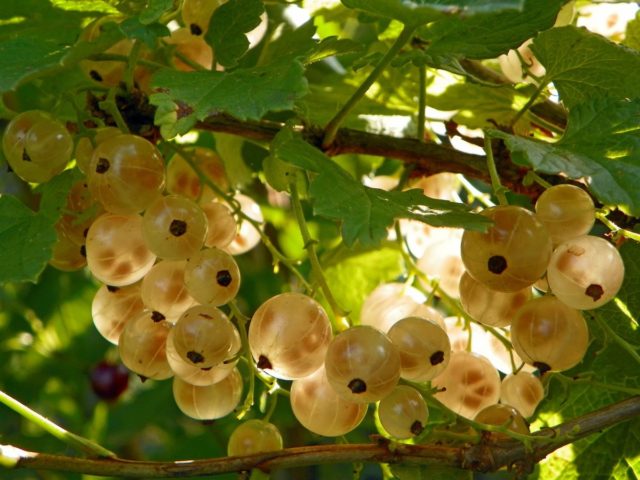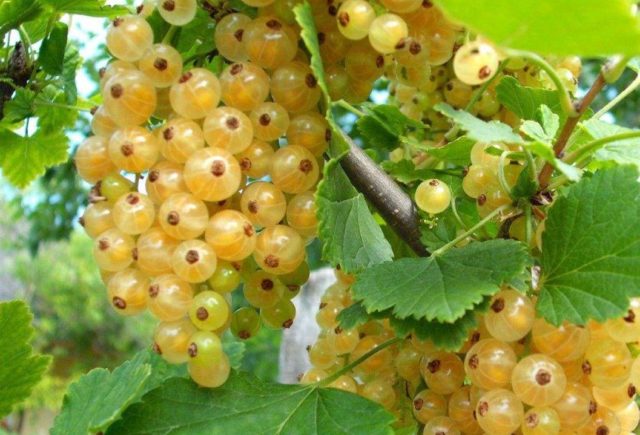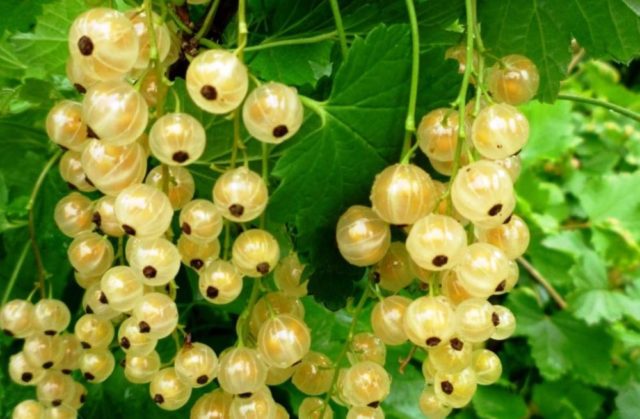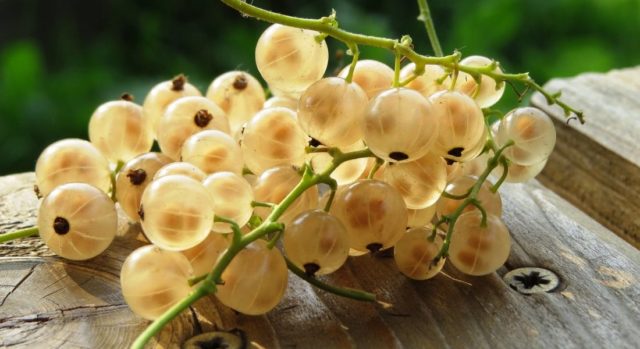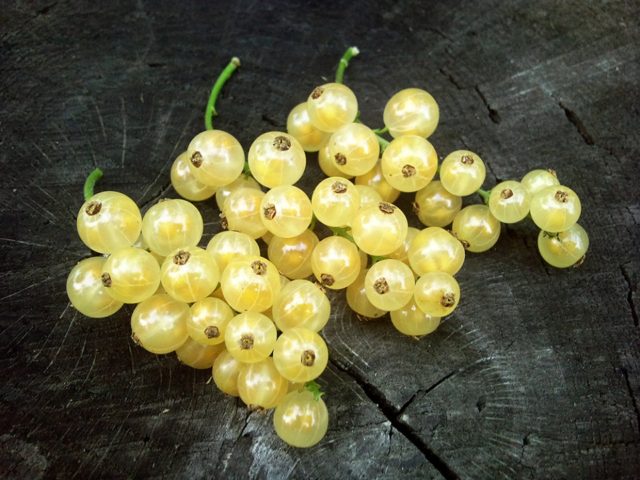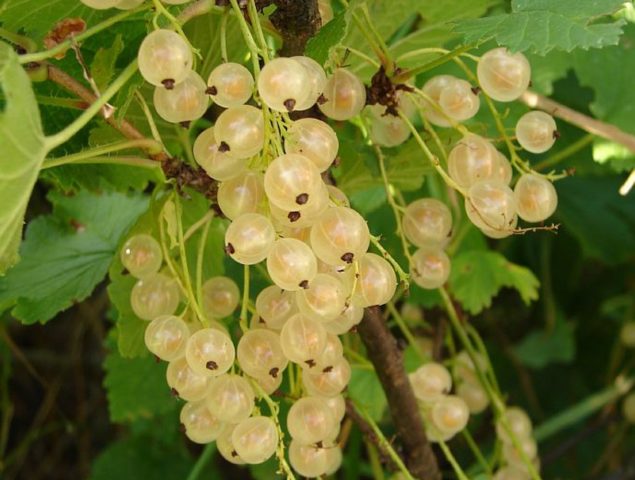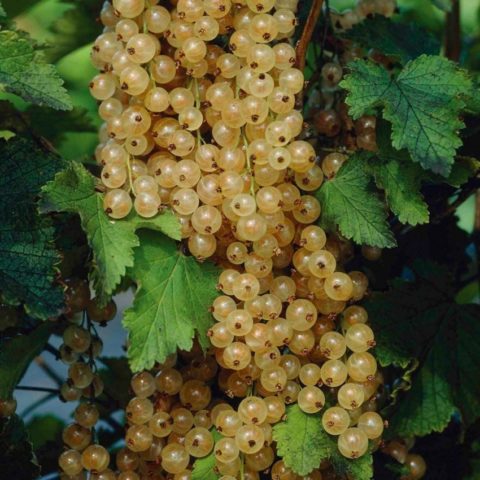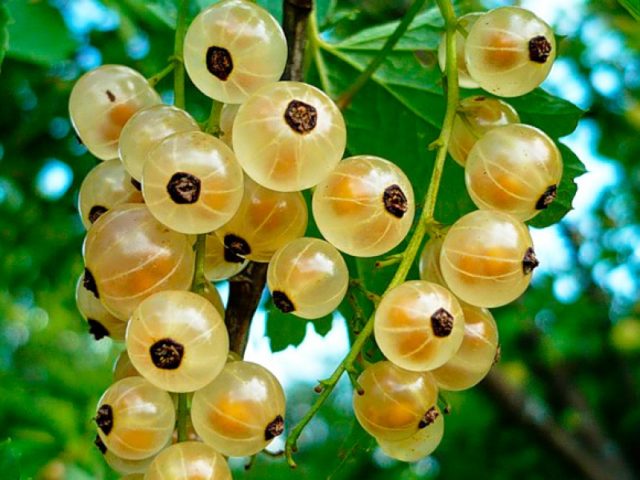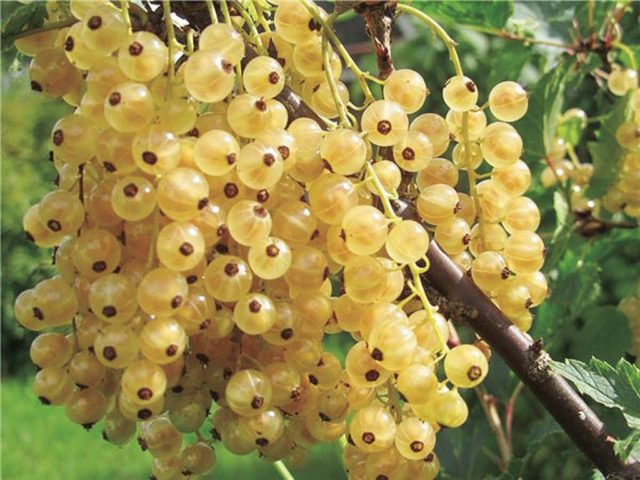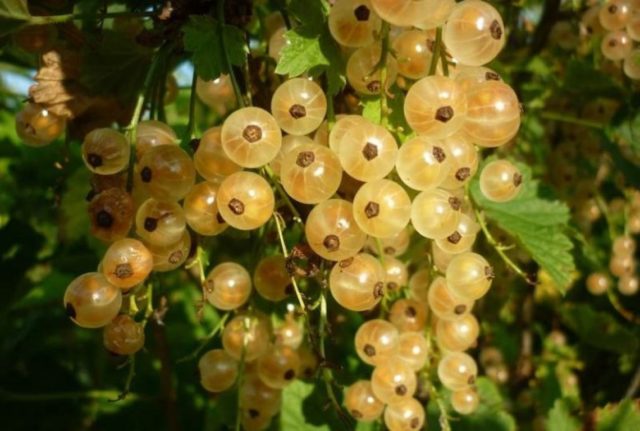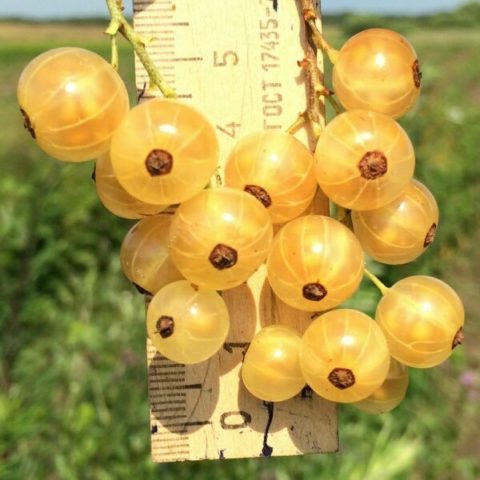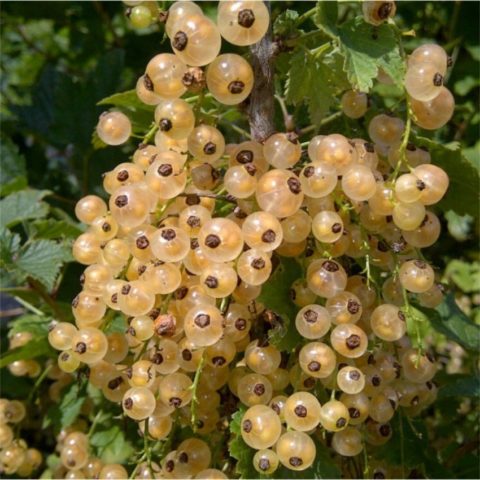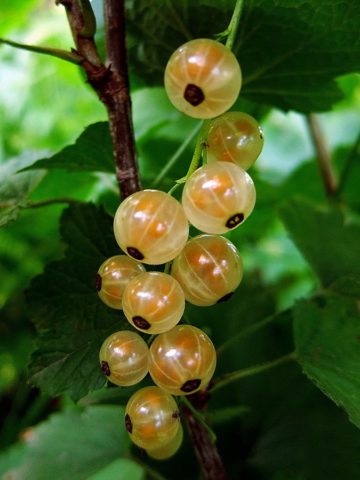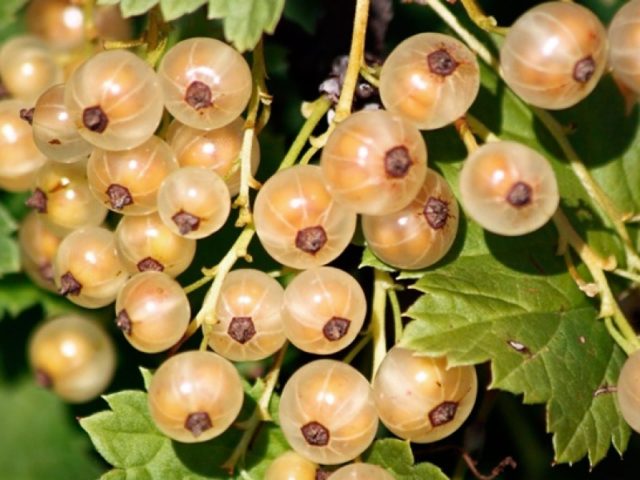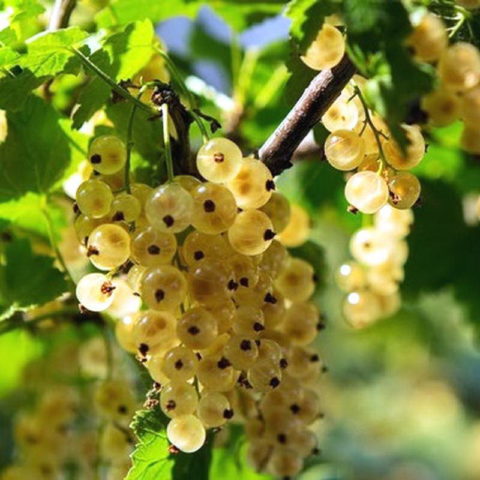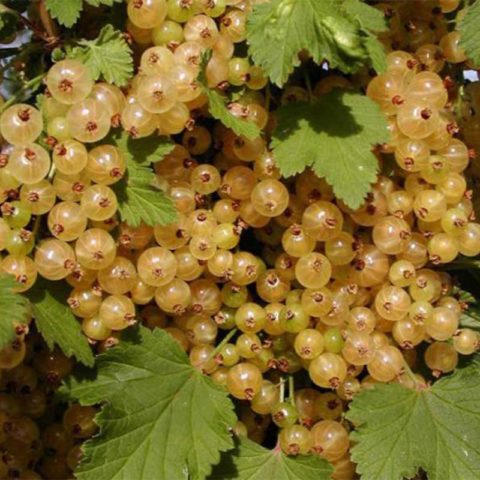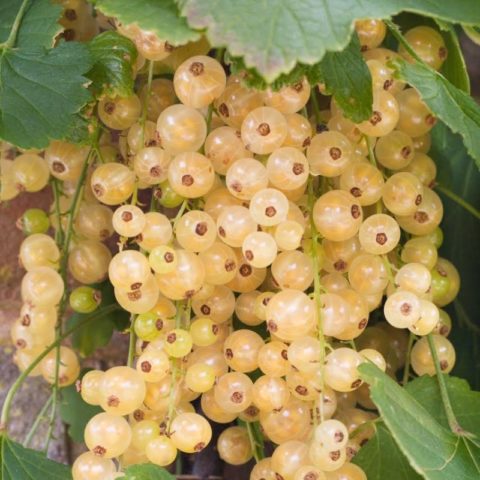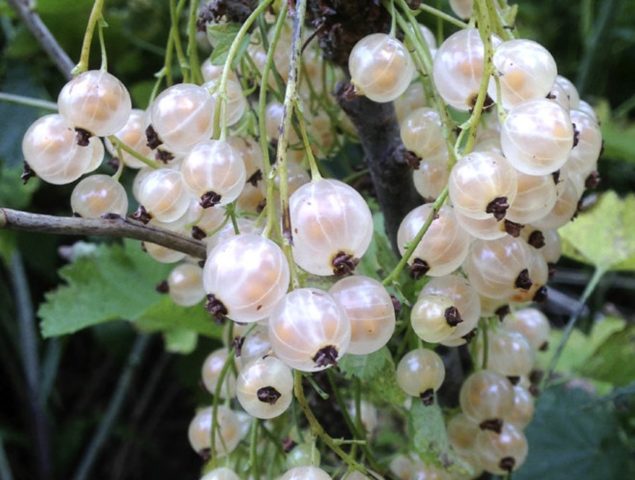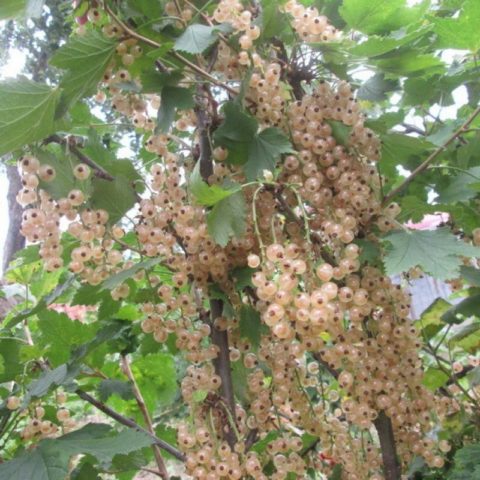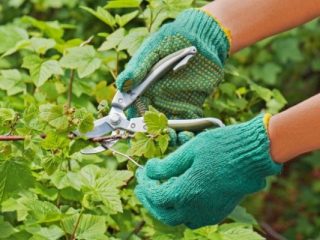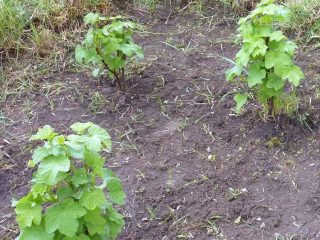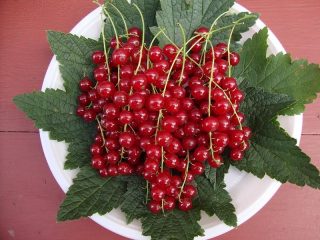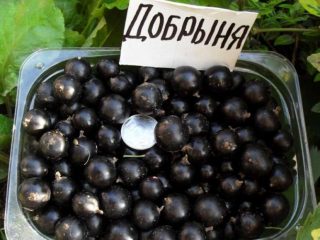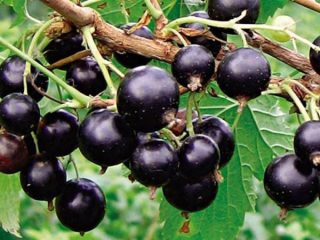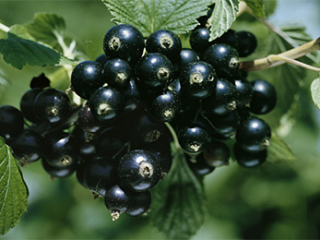Content
- 1 English white currant
- 2 White currant Bayana
- 3 Currant White Fairy (Diamond)
- 4 Currant White Pearl
- 5 Currant White grapes
- 6 White currant Squirrel
- 7 White currant Blanca
- 8 Large white currant
- 9 White currant Boulogne
- 10 Versailles white currant
- 11 Dutch white currant
- 12 White currant Viksne
- 13 White currant Witte Hollander
- 14 Dessert white currant
- 15 White currant Cream
- 16 White currant Minusinskaya
- 17 White currant Potapenko
- 18 White currant Primus
- 19 White currant Smolyaninovskaya
- 20 Ural white currant
- 21 White currant Juterborg
- 22 Conclusion
- 23 Reviews
White currant is a garden crop in the form of a shrub. It is valued for its unpretentiousness and productivity. The fruits are rich in vitamins, minerals and other beneficial substances. For planting, white currant varieties with the best characteristics are selected. In this case, the region of tolerance, winter hardiness, and ripening times must be taken into account.
English white currant
This is an old well-known variety that produces crops early. A good option for planting in the Moscow region and the middle zone. It is characterized by low self-fertility, so a pollinator must be planted nearby.
The bush is compact, consists of medium-sized branches. Its leaves are gray-green, slightly concave. Immunity to diseases is high, and signs of powdery mildew occasionally appear.The fruits are spherical, medium in size. Their taste is dessert, moderately sour. English white currants are suitable for home preparations.
White currant Bayana
Bayana bears fruit at a late date. The variety is recommended to be grown in the Central Black Earth region. The bush is vigorous, dense, slightly spreading. The shoots are thick, straight, red-brown.
The berries are the same size, weighing up to 0.7 g, with a whitish and transparent surface. They have a dessert taste and are rich in pectin. Bayana is valued for its productivity and winter hardiness, is immune to powdery mildew, but requires protection from red gall aphids.
Currant White Fairy (Diamond)
It is a mid-season hybrid intended for cultivation in the Central region. The bush is small, dense, slightly spreading. Its branches are strong, gray-brown, and erect. The plant needs regular pruning. The shrub is characterized by self-fertility and resistance to diseases and pests.
Diamond white currant bears large fruits. They are spherical, one-dimensional, beige in color, with pronounced stripes. Their taste is decent, with delicate sour notes. The harvest is used for any processing.
Currant White Pearl
A representative of the Dutch selection, which easily adapts to the conditions of Russia. The crown of the bush is medium in size and has an irregular or rounded shape. Resistance to fungal infections and pests is high.
White pearl bears fruit in mid-July. Each bush bears up to 10 kg of fruits measuring 6-9 mm, cream-colored. Their skin is strong and transparent. The harvest is processed into homemade products or frozen for the winter.
Currant White grapes
The plant is compact, of moderate growth vigor.The harvest ripens in late July. The berries have a pleasant sweetish taste and come off easily from the brush. Their skin has a yellowish tint.
White grapes are valued for their stable yield. Each bush brings, on average, 4 - 5 kg. The fruits are quite large. Increased resistance to diseases and pests. White grapes easily tolerate winter frosts.
White currant Squirrel
It is a medium-height shrub with spreading, straight shoots. It bears fruit in the mid-early period: its fruits weigh from 0.5 to 1 g and are flattened. Their skin is creamy and transparent, and the flesh is sweet with sour notes.
The Belka variety has increased winter hardiness. The harvest volume per season reaches 5 kg. The plant rarely suffers from septoria and powdery mildew. Treatments against kidney mites are required. The pulp contains pectin, which has gelling properties.
White currant Blanca
Medium fruiting variety. The harvest is ready for harvest in mid-summer. Fruiting is abundant with large, dense and sweet beige berries; when ripe, their skin becomes more transparent.
Blanca forms a powerful and large bush. It adapts well to different weather conditions. The crop tolerates harsh winters without problems and is not susceptible to diseases and pests. The scope of use of the crop is not limited.
The photo shows white currants of the Blanca variety:
Large white currant
Late large-fruited variety. It is a medium-sized shrub with powerful spreading shoots.It is resistant to unfavorable climates, withstands rainy weather and excess moisture in the soil.
Its fruits are creamy, their skin is transparent, their shape is round, slightly flattened, their taste is good. The berries contain little sugar, so they are recommended for diabetics of any age. The harvest is suitable for home canning.
White currant Boulogne
Famous French hybrid. Its bushes are compact and take up little space on the site. They are planted at a distance of 0.75 m from each other. The leaves are green, five-lobed, medium in size. The branches are straight, forming a spreading crown.
The berries have a dessert taste, the tasting score was 4.8 points. The pulp and skin of the berry are creamy, weight up to 0.9 g. Harvest volumes reach 4 kg per bush. When caring, take into account that the variety is susceptible to anthracnose. At the same time, there is good immunity to powdery mildew.
Versailles white currant
The variety comes from France, there is no information about its exact origin, it is recommended for planting in the middle zone, the Volga region, the North-West and the Urals. The crown is spreading and of medium size. The branches of the bush are strong and thick. The variety needs to be prevented from anthracnose. Immunity to powdery mildew at a high level.
Fruiting begins early - in the first ten days of July. According to reviews, Versailles white currant bears large berries. Their size is up to 1 cm, the skin is transparent. Self-fertility of the crop is low. The best pollinator is the Jonker van Tete variety.
Dutch white currant
An ancient hybrid bred in Europe. Dutch white currants ripen early. The shrub is self-fertile, its ovaries are formed without the participation of pollinators.The crown is quite compact, slightly spreading. Increased resistance to cold.
The fruits are of medium size, weighing about 0.7 g. Their color is creamy, the taste is excellent, sweet, with a slight sourness. The variety was assigned the maximum tasting score on a 5-point scale. The harvest volume per season reaches 9 kg. Ripe fruits do not bake and do not fall off.
White currant Viksne
One of the best varieties of white currant for all regions of Russia. Medium fruiting period variety. Information about the origin has not been preserved. It looks like a low spreading bush. The branches are not thick, slightly pink in color. Resistance to heat and cold is at a high level. Yields are average. The shrub is practically not susceptible to powdery mildew.
The fruits are formed in long clusters up to 10 cm long. Each contains up to 11 berries: large, spherical in shape. Their skin is beige with thin veins. The taste is good, sweetish.
White currant Witte Hollander
The variety was bred in Holland. In Russian conditions it ripens in the mid-late period. The harvest reaches ripeness in July. A powerful shrub up to 2 m high, with large brown shoots and large, five-lobed, dark green leaves. Resistance to cold and drought is increased.
Witte Hollender produces large berries up to 8 mm in size. They are collected in long brushes. Up to 8 kg of fruits are obtained from the bush. Due to their thick skin, they tolerate storage and transportation well.
Dessert white currant
The Dessertnaya white currant variety got its name due to its sweet taste. The berries are cream-colored, weigh up to 2 g. Their pulp is yellowish, sweet, with a refreshing sourness. The shrub was bred in Germany.
The Dessertnaya variety is characterized by high yield: up to 6 - 8 kg.Maturation occurs in the early period. The dense skin of the fruit allows it to withstand long transportation. The plant is not susceptible to frost and pests. Breeders managed to increase the resistance of the new hybrid to fungal diseases.
White currant Cream
Hybrid of medium fruiting period, common in the Central Black Earth region. Its crown is medium, not too spreading. The branches are straight, brown-brown in color. The winter hardiness and productivity of the crop are high. Susceptibility to diseases and pests is low.
The Kremovaya variety has good self-fertility. Its berries are large, weighing up to 1 g, located in long clusters. Their skin is thin, creamy, with white stripes. The taste is good, sour, refreshing in the heat. Productivity is characterized as stable, about 4 kg.
White currant Minusinskaya
Mid-season variety intended for cultivation in the East Siberian region. The crown of the bush is medium-sized, not thickened, spreading. Its shoots are thick, dark gray, and arranged straight. The plant tolerates winter cold without problems, but may suffer from drought.
The berries are large in size, their weight reaches 1 g. Their shape is spherical, the skin is yellowish and thin. It may be a disadvantage for many gardeners that the fruits have large seeds, but this makes up for their good taste, which is rated 4.6 points. The harvest does not withstand long transportation and storage.
White currant Potapenko
This is a mid-early fruiting variety intended for the Siberian region. The crown of the bush is slightly spreading and consists of branches of medium thickness. Its growth vigor is moderate.The plant is resistant to cold, the flowers do not fall off even after spring frosts. The crop's early fruitfulness is high; the shrub quickly begins to produce crops.
The Potapenko variety is self-fertile and forms ovaries without a pollinator. It bears fruit annually. Yield indicators are average. The berries, weighing 0.5 g, are spherical in shape and have a yellowish skin. They have a good taste, they were given a tasting score of 4.7 points.
White currant Primus
The hybrid was produced in the Czech Republic in 1964. In Russia, it is grown in the Central and Northwestern regions. The crown of the plant is of medium size, slightly spreading, thickened. Gray-brown shoots are located straight.
Fruits weighing up to 1 g are leveled, collected in dense long clusters. Their shape is spherical, the skin is transparent, the flesh is yellowish in color and has a good taste, sweetish with sourness. Up to 10 kg of berries are harvested from the bush. The culture has decent winter hardiness. The buds do not fall off after spring frosts.
White currant Smolyaninovskaya
According to the description, Smolyaninovskaya white currant produces a harvest in the mid-early period. It is approved for landing in the middle zone and the Volga-Vyatka region. Its crown is dense, of moderate strength. The branches are straight, strong, grayish. Increased resistance to pests and diseases of the crop.
The fruits are medium in size, have a mass not exceeding 1 g. Their shape is oval, the skin is whitish and shiny, the seeds are small and there are quite a few of them. The taste is rated as excellent, well refreshing. The harvest is used for processing. The plant's self-fertility is average; for abundant fruiting it needs a pollinator.
Ural white currant
The variety is approved for planting in the Ural region. Ripens in the mid-early period.Its crown is thickened and slightly spreading. The shoots are light green, slightly curved. The shrub is characterized by high productivity. Its resistance to frost is above average.
The berries, weighing up to 1.1 g, have a round shape and yellowish skin. Their taste is good, rated 5 points by experts. More than 6 kg of fruits are removed from the bush. The self-fertility of the variety is high; ovaries are formed without pollinators. The plant does not suffer from powdery mildew, and occasionally suffers from anthracnose.
White currant Juterborg
The hybrid comes from Western Europe. In Russia, it is grown in the Northern region, Siberia, the North-West and the Urals. The crown is medium-sized, spherical, dense and spreading. The self-fertility of the crop is average, the yield increases in the presence of pollinators nearby.
The Juterborg variety brings a high yield of up to 8 kg. Its fruits are large, reaching 1 cm in girth. Their shape is slightly flattened. The taste of the berry is pleasant, moderately sour. Resistance to septoria and anthracnose is average. The plant requires additional protection from pests.
Conclusion
White currant varieties are grown in different regions of Russia. When choosing a seedling, they are guided by taste and yield. In addition, the bush’s winter hardiness, susceptibility to diseases and pests are taken into account.
